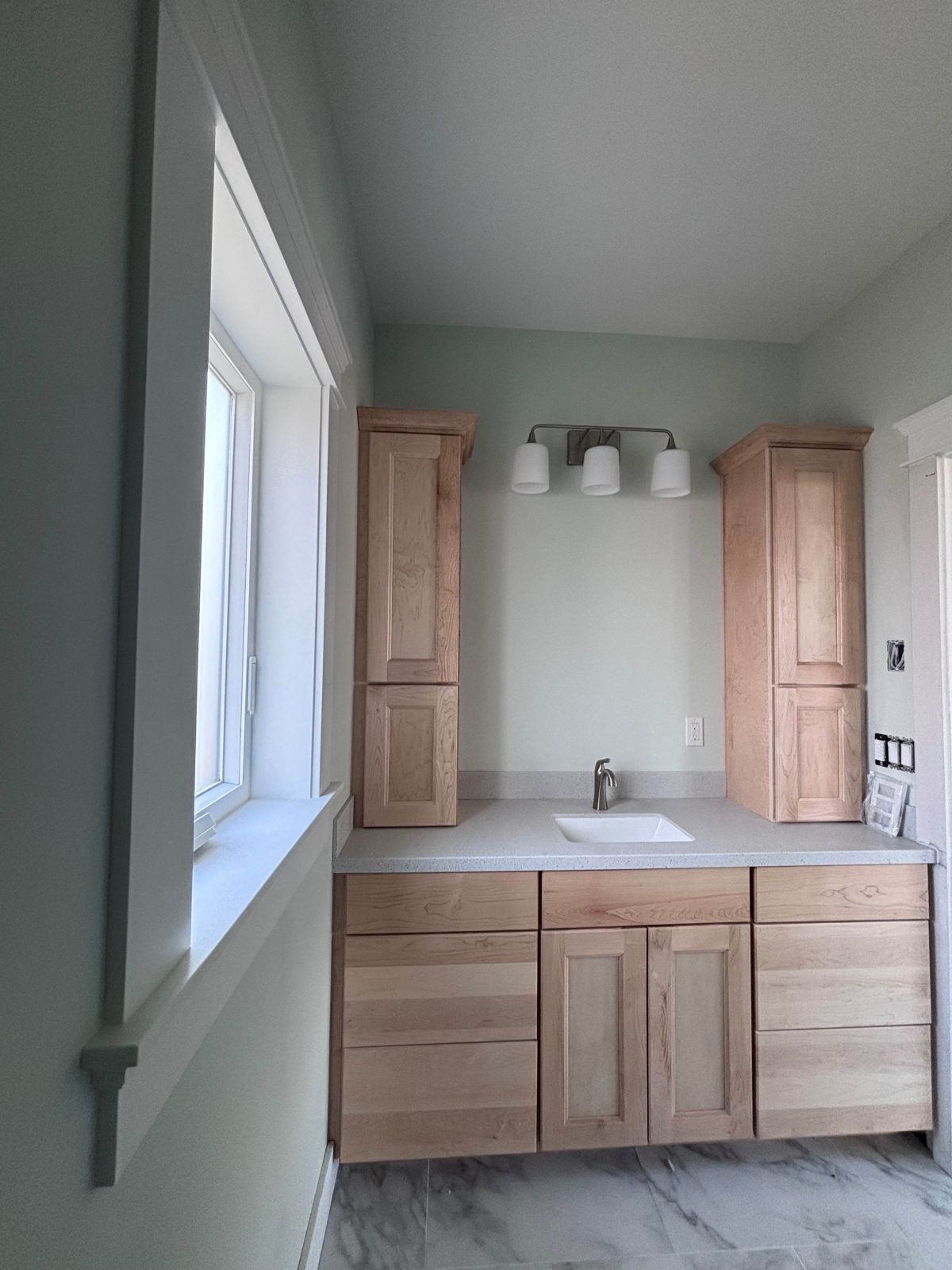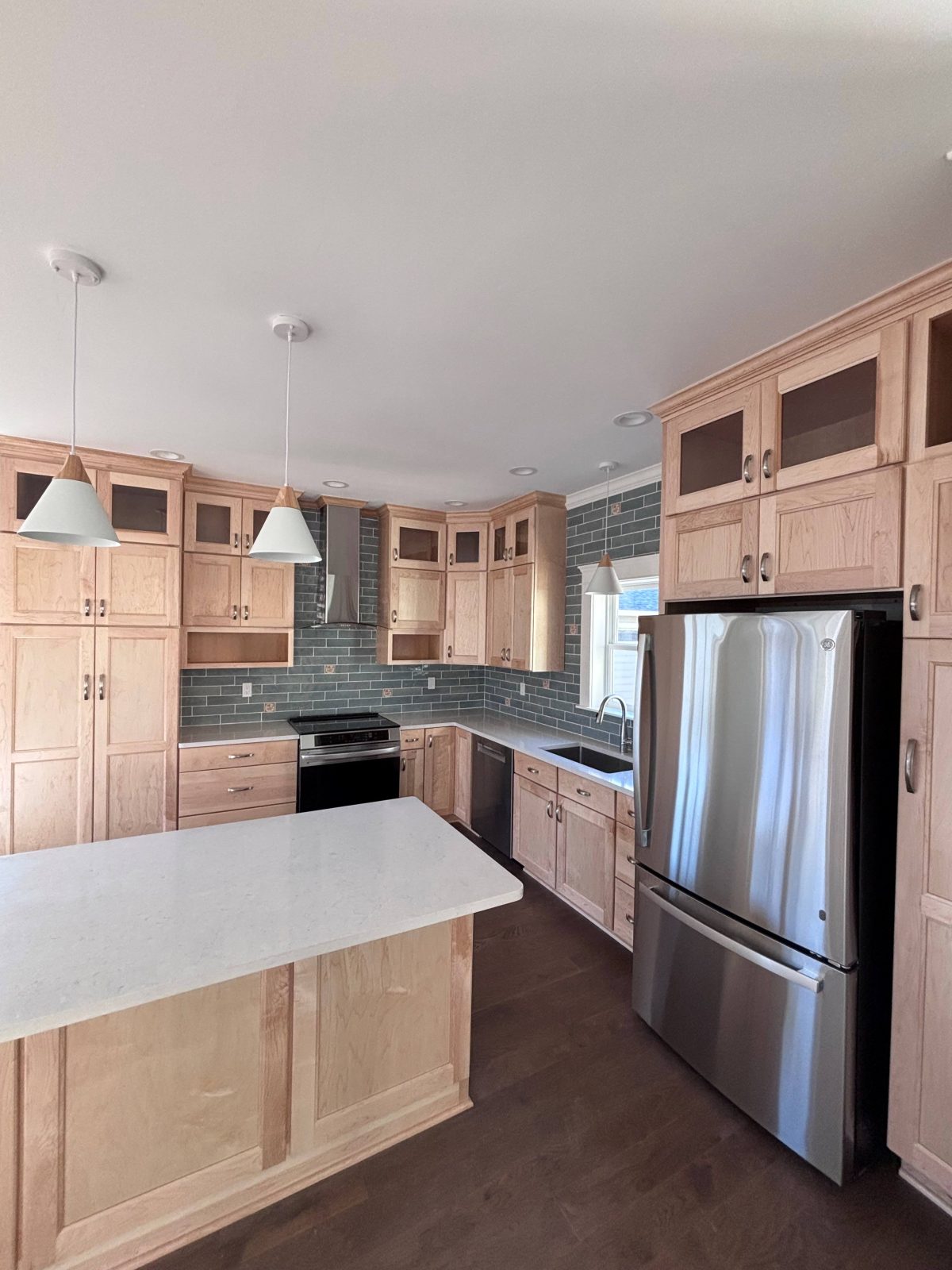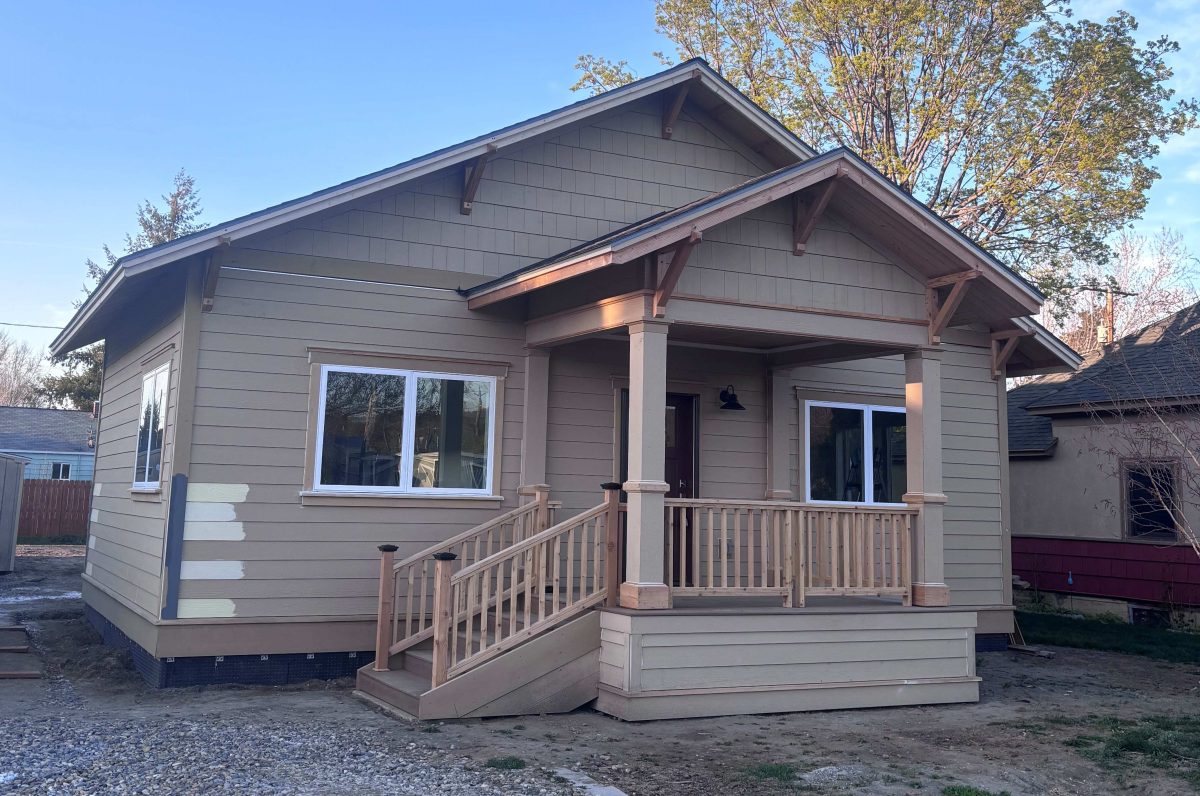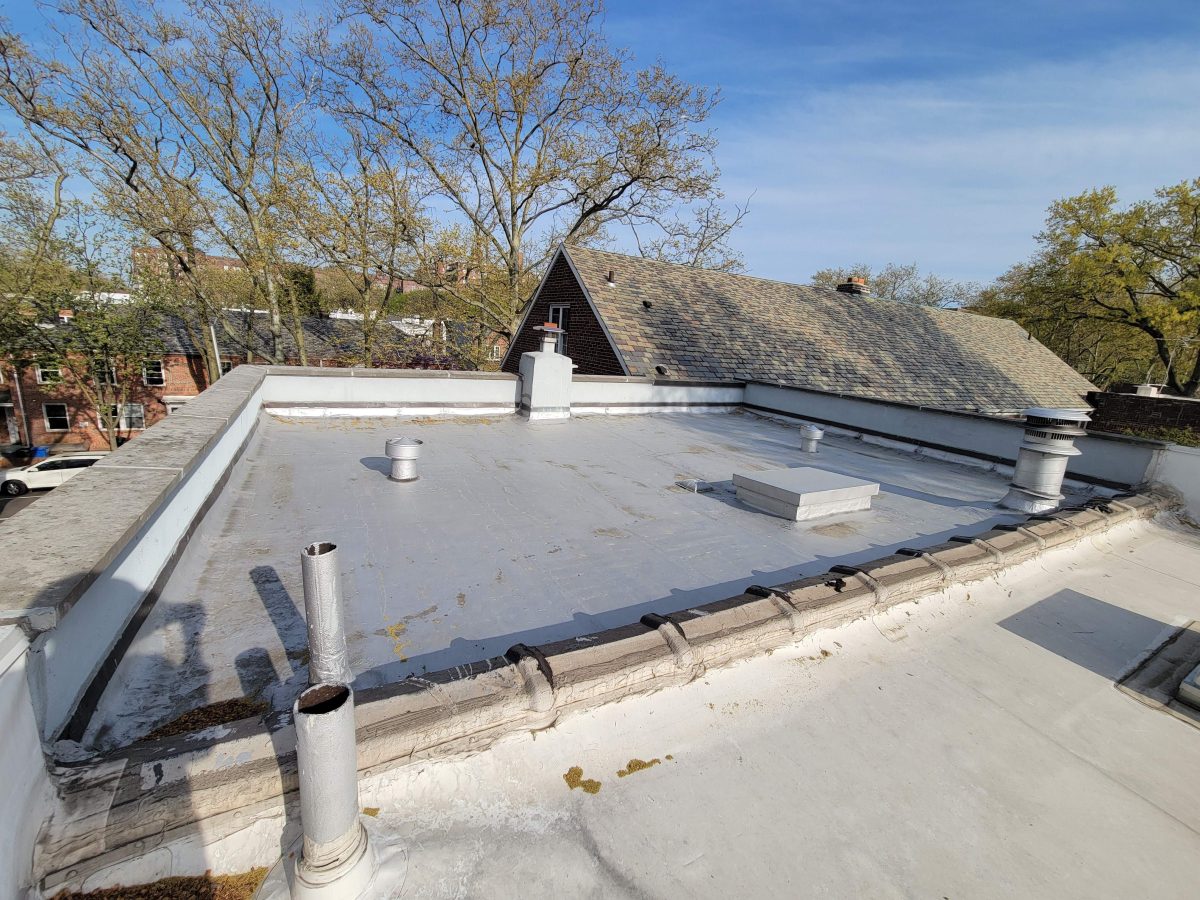Podcast Episode 687: Flat Roofs, Spray Foam vs. Loose-Fill Insulation, and Building Your Own Cabinets
Listeners write in about air-sealing numbers and wildfire recovery, before asking questions about replacing a row house roof and what kind of roof insulation is needed.

Welcome to the Fine Homebuilding podcast, our weekly discussion of building, remodeling, and design topics aimed at anybody who cares deeply about the craft and science of working on houses. This is senior editor Patrick McCombe. I’m joined by Fine Homebuilding contributing editor and production manager for TDS Custom Construction Ian Schwandt, Fine Homebuilding associate editor Grant Baver, and producer Cari Delahanty. Please email us your questions to [email protected].
You can find previous podcasts and check out the show notes at finehomebuilding.com/podcast
Check In:
Ian: Pricing projects during uncertain economic times
Grant: Fire-safety feature article in FHB and shop organization
Patrick: Trip to Corinth, Miss., and built-in
Listener Feedback 1:
Connor from Baker City, Ore., writes:
Hi Patrick and friends,
I wanted to follow up with my final air-sealing score on my first frame-to-finish house. I wrote in a few months ago with the results of my first blower-door test of 1.4ACH50. I had my final blower-door test conducted as part of my final inspections, and the results were moderately better at 1.3ACH50.
I credit the slight drop to the following: adding a bulb gasket to the attic hatch, caulking the drywall around all the electrical boxes on the exterior walls, and adding a few strategic beads of caulking at the bottom plate/subfloor joint.
I am very pleased with the overall score, but think I could get closer to 1ACH on my next build with a few changes to the building envelope. I’ve attached a few photos of the finished interior and the yet-to-be-painted exterior.
Listening to the podcast made the long hours of stapling down flooring and paint prep a little less tedious, and I look forward to listening to more episodes as I tackle my next project—finally completing a two-story addition on my own home, much to the relief of my very patient wife. As they say, it’s the cobbler’s children who go barefoot.
All the best,
Connor
 |
 |

RELATED STORIES
Listener Feedback 2:
Ryan from Redondo Beach, Calif., writes:
Hi FHB Crew!
I was just listening to the podcast when a listener wrote in about losing their home in the Paradise Fire and offered some helpful advice and resources for rebuilding. Given the fire-related articles you’ve done over the years, how about compiling a Project Guide on the website with all the great resources?
Love the pod as always!
Ryan
RELATED STORIES
- Designing for Wildfire Country
- Build a Fire-Resistant Deck
- Fire Separation Distances
- 7 Common Fireblocking Locations
Question 1: What’s the best replacement for a flat tar roof that will allow for people and gardening on it?
Joshua writes:
Hi FHB,
I’m curious if you have any insight on flat-roof systems.
We recently bought a small row house in Queens, N.Y., that we’d been renting for years. We have roof access via a pull-down ladder and I’d love to use the roof for something more than collecting leaves every fall (growing tomatoes, lounging, etc.). Currently it’s a tar roof, but it’s reaching the end of its life and will need to be replaced in the next couple years. I know that tar roofs don’t really lend themselves to foot traffic or concentrated loads like planters, so I was wondering if you had thoughts about what we might replace it with or about ways to spread loads on tar roofs so they maintain their integrity.
Obviously the purpose of a roof is to keep weather out—I’d hate for a gardening hobby to lead to a roof leak.
Thanks in advance,
Josh

RELATED STORIES
- Modified-Bitumen Flat Roofs
- Replacing PVC With an EPDM Membrane on a Flat Roof
- Guide to Low-Slope Roofing
- Decking Over a Roof
Question 2: Do I really need closed-cell spray foam?
Jim writes:
Hello FHB Podcast team,
We are building a home in climate zone 6a. Every builder we speak with wants to use spray foam everywhere, from the walls to the attic. I’m convinced they put it on their breakfast cereal.
My first question is about closed-cell spray foam under the roof deck. It is designed to be a vented, unconditioned space, with energy-heel trusses, taped Zip sheathing, underlayment and shingles. (The cost of metal roofing today is too heavy on the budget, and shingles will outlive me anyhow.) The primary air barrier is the ceiling’s smart vapor retarder. (We designed chases inside the conditioned space for duct runs.) So, why does the contractor want to use closed-cell spray foam under the roof deck if the space is not conditioned? What purpose does it serve? I thought we would run baffles beyond the height of the cellulose sitting on the ceiling and be done with it.
My second question is about the walls. They will be comprised of LP SmartSide, rainscreen, Zip R-9, 2x6s, a smart vapor retarder, and drywall. The contractor wants to flash and fill with 1.5- to 2-in. closed-cell spray foam. They like the air-sealing qualities of the spray foam and how it makes the walls more rigid. They would have foam against foam with the Zip R-6. Thoughts?
Thanks!
Jim
RELATED STORIES
- Open-Cell vs. Closed-Cell Foam
- Podcast Segment: Roof Deck Insulation
- Should I Vent a Roof Insulated With Spray Foam?
- Video: Spray Foam Insulation in a Gut Remodel
Question 3: What are your thoughts on cabinetmaking?
Patrick has some questions about cabinetmaking for the crew and listeners.
- Do you like this work?
- What are the pros and cons versus manufactured cabinets?
- Face frames or frameless cabinets?
- What box material?
Please send in your tips for cabinets and built-ins. And check out Gary Striegler’s two-part series about installing built-ins in upcoming issues of FHB.

Question of the week: How early is too early? When is it appropriate to start using power tools or outdoor power equipment on the weekends?
Sign up for the e-learning course A Builder’s Guide to Kitchen Design.
Unfortunately that is all the time we have for today. Thanks to Ian, Grant, and Cari for joining me and thanks to all of you for listening. Remember to send us your questions and suggestions to [email protected] and please like, comment, or review us no matter how you’re listening–it helps other folks find our podcast.
Happy Building!
Fine Homebuilding Recommended Products
Fine Homebuilding receives a commission for items purchased through links on this site, including Amazon Associates and other affiliate advertising programs.

Reliable Crimp Connectors

Handy Heat Gun

Affordable IR Camera


























